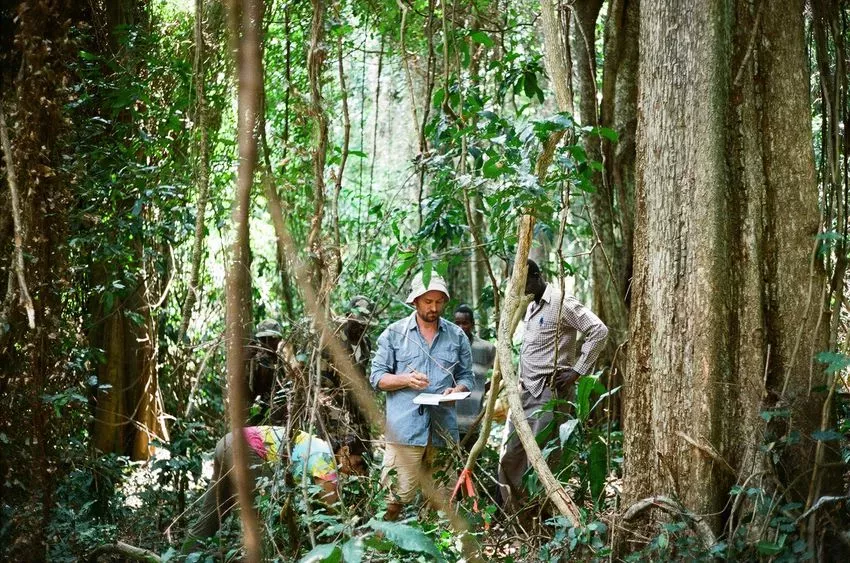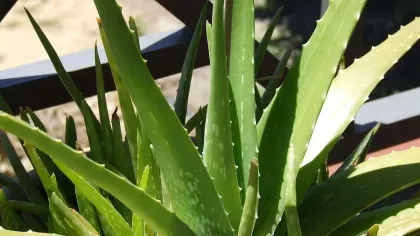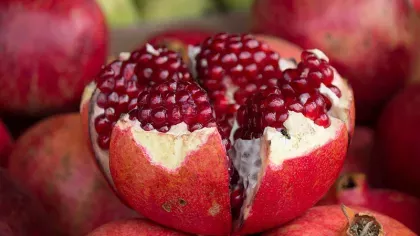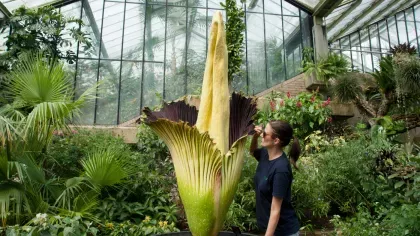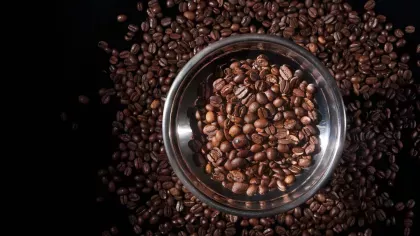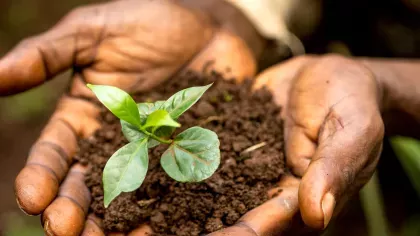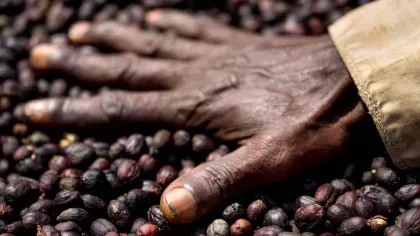
Arabica coffee
On this page
Coffee is one of the world’s favourite drinks, with over 400 billion cups consumed each year.
It is made from the roasted seeds of coffee (Coffea) plants.
Whilst there are 124 species of coffee, arabica is the most widely used in your morning brew.
Scientists at Kew have found that wild arabica coffee is Endangered, mainly due to deforestation and climate change.
It is vital we protect wild species from extinction, to sustain the future of our precious cup of coffee.
Around 100 million people worldwide depend on coffee production for their livelihoods
Plant description
The arabica coffee plant is a small tree that is between 2m and 8m tall and has evergreen, usually shiny leaves. The flowers are white and sweetly scented, and the fruits are red, but sometimes yellow or purple. Each fruit produces two green seeds, which are commonly known as coffee beans. After roasting, the seeds turn brown.



Plant uses
Beauty and cosmetics
Extracts from the coffee berry and unroasted coffee bean are found in many beauty products because they are rich in caffeine and other antioxidants that help care for your hair and skin. Antioxidants fight unstable atoms, known as free radicals, that are found naturally in the body or in the environment and damage cells.
Food and drink
The outer layer of coffee berries, the pulp, is edible and sweet tasting; it is used in a variety of foods. The seeds are roasted and used to make coffee but may also be used as a food source.
Health
Caffeine from coffee beans is used as a stimulant and a diuretic.
Coffee is also used in many forms of traditional medicine in Africa and Asia for example, when treating ailments such as stomach ache, diarrhoea, and low blood pressure.
Did you know?
Coffee beans are actually seeds found inside the red berries that grow on the coffee plant.
Arabica coffee accounts for around 65% of global coffee production and Robusta coffee (Coffea canephora) accounts for the rest.
Arabica coffee is considered to taste better than robusta coffee thanks to its natural sweetness. The caffeine content of arabica is lower than robusta.
In the UK we consume an estimated 85 million cups of coffee every day.
Ethiopia is Africa’s largest exporter of arabica coffee. Their coffee exports have an average value of an incredible $1 billion a year.
Where in the world?

Humid, montane, evergreen forests in tropical areas. It grows at high altitude, from 950 to 1,950 m above sea level. Climatically, it is found in regions that do not experience frost or strong winds and have well distributed rainfall and a defined dry season. It prefers a deep, well-drained, loamy, slightly acidic (pH 5.8–6.0) soil and its optimum mean temperature range is 18—23°C.
Find it in our gardens
Kew Gardens
A botanic garden in southwest London with the world’s most diverse living plant collection.
Location
Palm House and behind the scenes in the Tropical Nursery
View map of Kew GardensBest time to see
Our work
Kew’s Plant Assessment Unit conducts risk assessments for the International Union for the Conservation of Nature (IUCN) Red List to identify plants that are threatened with extinction.
This work revealed that wild arabica is Endangered.
The natural population of arabica coffee is estimated to reduce by up to 50% or more by 2088 due to climate change alone, although deforestation is also a major threat to the survival of this species.
Rising temperatures and erratic rainfall bring pests, diseases, and droughts, which also threaten arabica plants.
The future of coffee lies in the use of its wild relatives.
These wild plants house important genetic resources that can be used by breeders to produce new cultivated varieties of coffee that are resistant to pests and diseases, and more climate-resilient
Scientists at Kew rediscovered the ‘lost’ coffee, Coffea stenophylla, in the depths of forests in Sierra Leone.
If conserved, this wild species could help us develop a new tasty cup of coffee that sustains livelihoods and protects one of the world’s most popular drinks.
